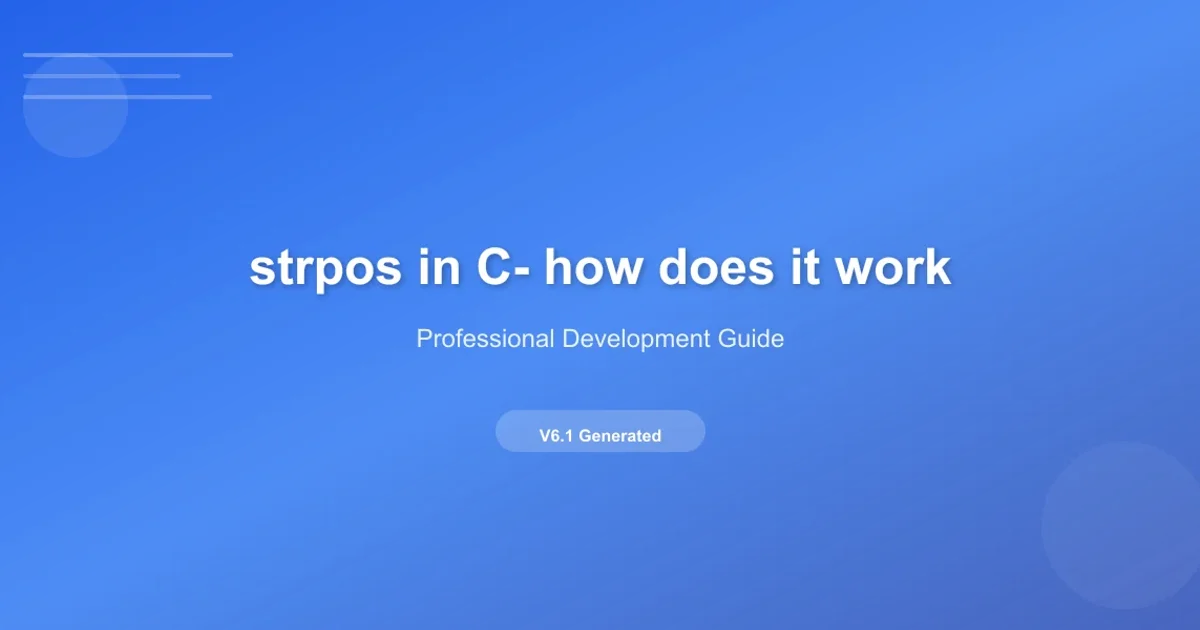Getting ORA-01031: insufficient privileges while querying a table instead of ORA-00942: table or ...
Categories:
ORA-01031 vs. ORA-00942: Understanding Oracle Privilege Errors

Learn why you might encounter 'ORA-01031: insufficient privileges' when expecting 'ORA-00942: table or view does not exist' in Oracle Database, and how to diagnose and resolve these common issues.
When working with Oracle databases, encountering errors is a common part of the development and administration process. Two particularly common and sometimes confusing errors are ORA-01031: insufficient privileges and ORA-00942: table or view does not exist. While ORA-00942 clearly indicates a missing object, ORA-01031 can be misleading when you're certain the table exists. This article will delve into the nuances of these errors, explaining why Oracle might report insufficient privileges even when the underlying issue seems to be access to an existing object, and how to effectively troubleshoot them.
The Core Difference: Existence vs. Access
At a fundamental level, ORA-00942 means the database cannot find the object you are trying to reference. This could be due to a typo in the table name, the table being in a different schema and not qualified, or the table genuinely not existing. On the other hand, ORA-01031 means the object does exist, but the user attempting to access it lacks the necessary permissions to perform the requested operation (e.g., SELECT, INSERT, UPDATE, DELETE).
flowchart TD
A[User attempts to query table] --> B{Does table exist?}
B -->|No| C["ORA-00942: table or view does not exist"]
B -->|Yes| D{Does user have SELECT privilege?}
D -->|No| E["ORA-01031: insufficient privileges"]
D -->|Yes| F[Query successful]Decision flow for Oracle table access errors
Why ORA-01031 Instead of ORA-00942 for an Existing Table?
The key reason Oracle reports ORA-01031 instead of ORA-00942 when a table exists but the user lacks privileges is due to how Oracle handles object visibility and security. When a user attempts to access an object, Oracle first checks if the object exists and is visible to the current schema or through public synonyms. If the object is found, the next step is to verify if the user has the necessary privileges to perform the requested operation on that specific object. If privileges are missing, ORA-01031 is raised. This behavior prevents information leakage about the existence of objects that a user is not authorized to know about. If Oracle always returned ORA-00942 for non-privileged access, it could inadvertently confirm the existence of an object to an unauthorized user, which is a security risk.
SCHEMA_OWNER.TABLE_NAME) or ensure a public synonym exists and is accessible. This helps avoid ambiguity and potential ORA-00942 errors.Common Scenarios and Troubleshooting Steps
Let's explore common scenarios where ORA-01031 might appear unexpectedly and how to diagnose them.
1. Verify Table Existence and Schema
First, confirm the table actually exists and note its owner. Log in as a user with DBA privileges or the table owner and query ALL_TABLES or USER_TABLES.
2. Check User Privileges
As a privileged user, query DBA_TAB_PRIVS or ALL_TAB_PRIVS to see if the problematic user has SELECT (or other required) privileges on the table. Remember that privileges can be granted directly or via roles. If granted via a role, ensure the role is enabled for the user.
3. Examine Role Status
If privileges are granted via a role, check if the role is active. Roles might not be enabled by default or might require a password. Use SELECT * FROM SESSION_ROLES; to see active roles for the current session.
4. Review Synonyms
If the user is trying to access the table without schema qualification, a synonym might be in play. Check ALL_SYNONYMS or USER_SYNONYMS to see if a public or private synonym points to the correct table and if the user has privileges on the synonym's target object.
5. Grant Necessary Privileges
If privileges are missing, grant them. For example, to grant SELECT on MY_TABLE to APP_USER:
GRANT SELECT ON SCHEMA_OWNER.MY_TABLE TO APP_USER;
-- Or, if granting via a role:
GRANT SELECT ON SCHEMA_OWNER.MY_TABLE TO APP_ROLE;
GRANT APP_ROLE TO APP_USER;
Granting SELECT privileges to a user or role
SELECT ANY TABLE is a powerful privilege that allows access to all tables in the database. Use it with extreme caution and only when absolutely necessary, as it bypasses granular security.Example Scenario: Direct vs. Role-Based Privileges
Consider a scenario where USER_A owns TABLE_X. USER_B needs to query TABLE_X.
Scenario 1: Direct Grant
USER_A executes: GRANT SELECT ON TABLE_X TO USER_B;
USER_B can now query TABLE_X.
Scenario 2: Role-Based Grant
USER_A executes: GRANT SELECT ON TABLE_X TO MY_ROLE;
DBA or USER_A executes: GRANT MY_ROLE TO USER_B;
If USER_B still gets ORA-01031, it's possible MY_ROLE is not enabled. This often happens in PL/SQL procedures where roles are not enabled by default. To enable a role, SET ROLE MY_ROLE; can be used, but this is usually handled by the application server or connection pool configuration.
-- As USER_A (table owner)
CREATE TABLE TABLE_X (id NUMBER, name VARCHAR2(100));
INSERT INTO TABLE_X VALUES (1, 'Test Data');
COMMIT;
-- As USER_A, grant privilege to a role
CREATE ROLE MY_APP_ROLE;
GRANT SELECT ON TABLE_X TO MY_APP_ROLE;
-- As a DBA or USER_A, grant role to USER_B
GRANT MY_APP_ROLE TO USER_B;
-- As USER_B, attempt to query
SELECT * FROM USER_A.TABLE_X;
-- If MY_APP_ROLE is not enabled, this will result in ORA-01031
-- To enable the role (if not automatically done by connection)
SET ROLE MY_APP_ROLE;
SELECT * FROM USER_A.TABLE_X; -- This should now work
Demonstrating role-based privilege management and potential ORA-01031